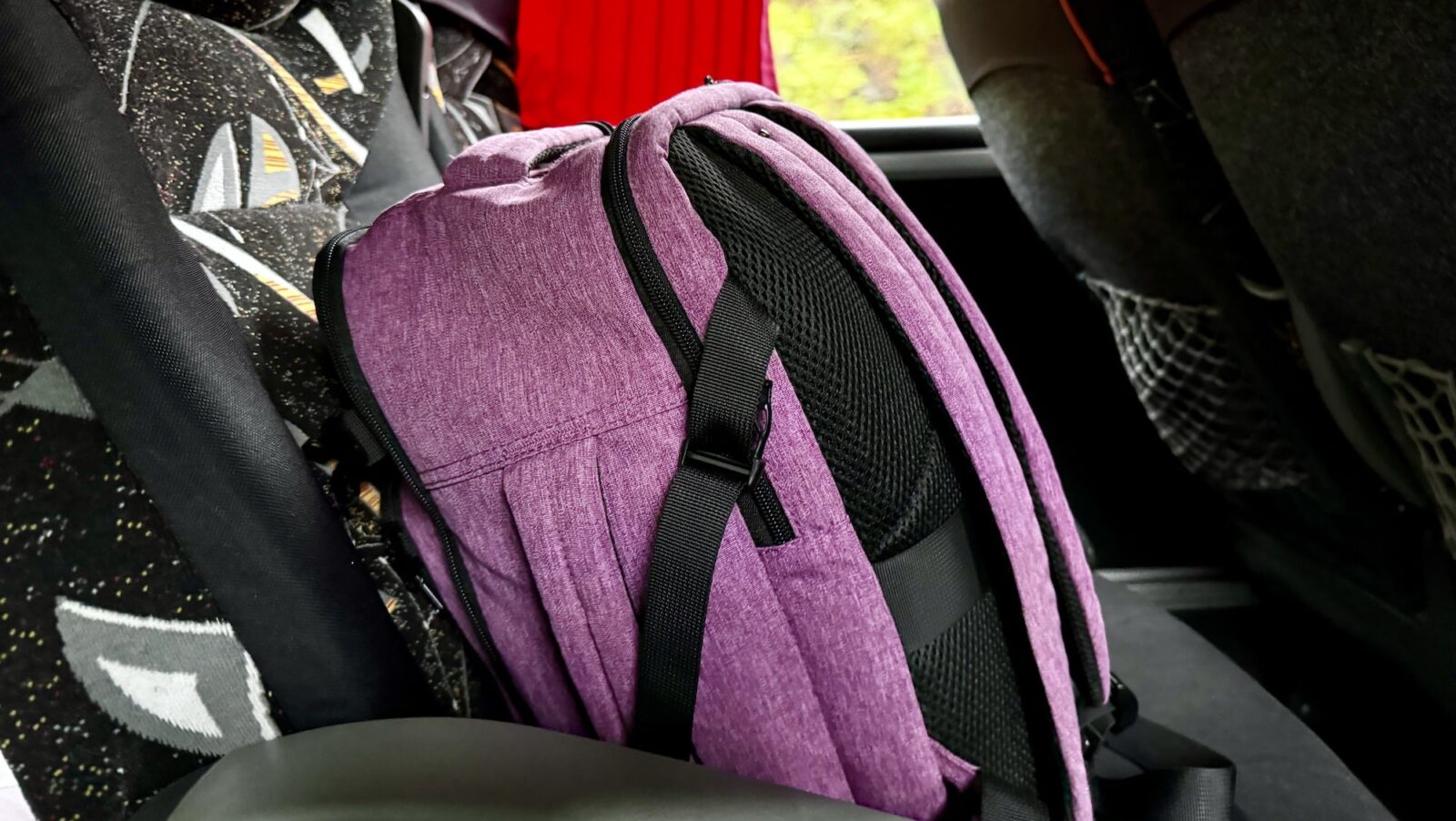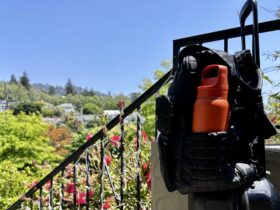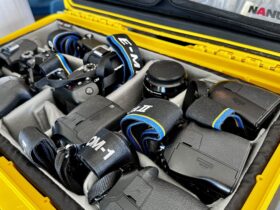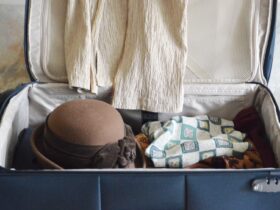On tours, you want your daybag packed with everything you need, but not an ounce more. So how do you achieve daybag nirvana on a tour? Here’s my guide to how to do it. First, you’ll need to understand the dynamics of your particular tour (more on the types below). I’ve also included a rundown of key items you might want to include in your daypack.
If you can leave a bag on the coach
On many tours, you can use the coach as your homebase and are able to leave items on the bus while you sightsee. On a tour like this, consider using not one but two daybags.
Your coach daybag holds all the things that help you pass the time in transit–a book, tablet, chargers, snacks, and so on–along with items you don’t necessarily need all day like layers that you might need in the morning but don’t want to carry all day. A backpack or a tote bag are great options for your coach daybag.
Then there’s your smaller and lighter sightseeing bag. In this bag, you’ll keep everything you need for your time off the coach. Your phone or camera, travel wallet, water bottle, and any other necessities you want to keep on hand. If you’re getting on and off the coach throughout the day, you can adjust what’s in your sightseeing bag as needed, but the idea here is to only carry the things you need for any given outing.
If you’re smaller sightseeing bag can tuck into your larger coach daybag at the end of the day, all the better for keeping track of all your things.
If you have to take everything with you
If you’ll be carrying everything you need with you all day, you’ll have to be a bit more selective about what to bring with you. A backpack can be a great option, but if you don’t like not being able to see your stuff–a potential concern in places where pickpockets are active–or you don’t like the feel of a backpack, a crossbody bag is another comfort-forward option.
As you’re thinking through what you want to bring, get creative about ways to shave weight and bulk. For instance, maybe you don’t need your whole travel wallet and can get by with a credit card and some cash tucked into a safe spot in your bag. A soft glasses case isn’t quite as protective, but it’s lightweight and if you’re mostly wearing your glasses, there’s less risk of damage anyway. And are there smaller versions of items like sunscreen you can bring along?
If you’re hiking or biking
If you’re on an active-travel tour, you’ll want to be prepared for weather and sun. Hydration is key, and a water bottle that won’t leak is vital. A series of lightweight layers will help you adjust to changing temperature and weather conditions. And sunscreen is a must, though having a small container of it will cut down on weight. For hiking and biking daybags, a backpack is generally recommended, especially backpacks that have hip and sternum belts. These features really are a game changer since they take the weight off your shoulders and allows you to comfortably carry a bag all day.
What to pack in your daybag on a tour
Since the circumstances of tours vary wildly, this list isn’t one-size-fits all, but I’ve tried to make it as comprehensive as possible so you can scan the items and decide which are important for your own daybag.
- Water bottle: The only time this won’t be true is in places where it’s not recommended to drink the tap water and safe water refill stations aren’t the norm. In that case, you’re likely going to be stuck with toting a single-use plastic water bottle.
- Travel wallet: If you don’t already use a travel wallet, it’s time to switch. A travel wallet is a pared-back version of your daily wallet, one without the library card and the extra credit cards and the gift cards you’ve been meaning to use but always forget about. It’s a wallet that just holds the credit cards you use for travel (hopefully the ones without foreign transaction fees) and some money in the local currency. It’s small, it’s light, and if you lose it or it gets stolen, it won’t take hours on the phone with credit card companies cancelling cards. Bonus points for a travel wallet with a zippered pocket, since many countries are still pretty coin-based.
- Phone: It’s your map, camera, phone, and all-around external brain. Make sure it’s charged at the beginning of each day and if you’re using it a lot, don’t forget a …
- Charger: If you’re using your phone for videos or mapping, you’ll likely run the battery down a lot faster than you would at home. Keep a small charger on hand and you’ll be ready to charge back up without missing a beat. At night, you can recharge the charger and be ready to go the next day.
- Personal items: A small soft case is a great option for carrying items like a travel-sized hand sanitizer and sunscreen (or brush-on mineral sunscreen, a personal favorite and good for women, men, and kids), any daytime meds you want to have on hand, lip balm, sunglasses, a few bandages just in case, etc.)
- Hat: Whether your travels bring you to places where you need a warm hat or a sun hat, a hat is useful if you’re going to be spending a lot of time outside. Choose one that can be stashed easily; as much as I love my wide-brimmed straw hat, when I travel I opt for a baseball hat or crushable sun hat so I can pop it into my daybag when I don’t need it.
- Headphones: Listening to music or videos without headphones is a real no-no. Pop in some earbuds or headphones and you’ll have the dual benefit of better sound and sparing the air for those around you.
- Camera: Whether you’re using your phone or a camera, make sure your picture-taking device is charged up and has enough memory to help you capture those once-in-a-lifetime moments.
- Entertainment: If you’re going to be busy all day, you are unlikely to need a book, magazine, or tablet, but if you know you’ll be spending time in transit or waiting, it’s nice to have something to do. But don’t overdo it; part of the joy of travel is watching the scenery and local life, and the feeling of light boredom can be a much-needed mental reset when you’re somewhere unfamiliar.
- Notebook or Sketchbook and pen: If you love to write or sketch, make sure to pack your tools. The act of writing or drawing can help you immerse yourself and observe in new ways.
- Rain gear: If there’s a chance of rain, tuck a small umbrella, a tiny poncho, or, in the event you’re going somewhere regularly rainy, gear like a rain jacket or rain pants into the bottom of your daybag. That way, you won’t be caught unprepared in a downpour.














